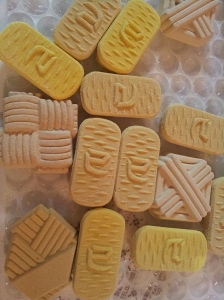I am always anxious to bring in spring; my favorite season…especially after the Blizzard of 2013 in the Northeast of the US.
This year on February 2nd, I was lucky to witness the Setsubun ritual at my local shrine in my other neighborhood in Japan. The tradition of Setsubun no Hi or Setsubun Day is all about welcoming the spring.
When the idea came to Japan in the 18th century, it was incorporated into Japan’s native religion, Shintoism. But Setsubun originated in China is performed before the Lunar New Year.
In Japan, Setsubun is an annual Shinto ritual. Beans are thrown as a symbol to shoo out the evil spirits from the past year and thus welcoming in the new season; spring. After a purification ceremony is performed, including waiving folded white paper (gohei), the Shinto priests toss good luck coins into the crowd; 5-yen or 100-yen coins. 
While I was taking photos of the ceremony, unbeknownst to me a 100-yen coin landed in my shoulder bag! I thought I heard something fall in, but I didn’t find it right away. I guess that means 2013 will bring me lots of good luck!
Setsubun is surely full of superstition, as it based in Japan’s original religion Shintoism, which has plenty of good and evil spirits in every animate and inanimate object.
You must admit though, that American culture has some pretty superstitious rituals. Consider the same time of year-February 2nd, Ground Hog Day! Most notable is that both Shinto practices and the idea of having a ground hog predict the weather are strangely related; both customs are based in ancient nature worship and animism.
For now I’ll cross my fingers that we won’t have any more blizzards this year and eat a few more sweets with the Chinese character of “snake” ensuring 2013 is truly a good-luck, snake year.





Do I have your permission to use this photo on a poster I am creating to teach indigenous people about disaster planning?